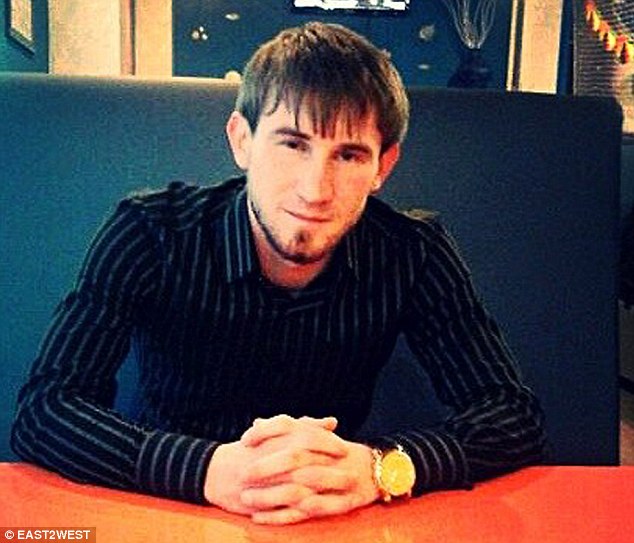
Russian Intelligence Experiences Setback in Effort to Penetrate Islamic State Network in Syria
Publication: Eurasia Daily Monitor Volume: 12 Issue: 221
By:

Central Intelligence Agency (CIA) Director John Brennan has estimated that 2,000–3,000 militants from Russia are fighting in Syria (Mk.ru, November 16), half the number given by Russian President Vladimir Putin (Portal-credo.ru, October 16). Syrian President Bashar al-Assad provides an even higher figure: he estimates that 10,000 citizens of Russia and other post-Soviet states are fighting in his country (Vz.ru, November 20). It is hard to distinguish between North Caucasians and the other Russian citizens, since Russian-speakers tend to stick together in the Middle East. Russia’s security services base their estimates on information they have about suspicious individuals who are absent from the country for extended periods of time, normally staying in Turkey. The Russian authorities turn a blind eye to the threats made by regional governors against relatives of those who left for Syria, apparently deeming such policies as productive (Rg.ru, November 23).
Attempts by some Russian regional governors to downplay the number of people from their republics fighting in Syria are mainly aimed at improving their image and do not reflect the real situation on the ground. For example, Chechnya’s Prosecutor General Sharpuddi Abdul-Kadyrov announced that the authorities launched 292 criminal cases against individuals who had allegedly joined the Islamic State (IS). Chechnya’s ruler, Ramzan Kadyrov, stated that the republican authorities had managed to return home about 50 Chechens who had joined the IS but later repented. According to Kadyrov, overall nearly 500 Chechens joined the IS and, of those, 200 have been killed (RIA Novosti, November 28). This suggests there are currently 250 Chechen fighters in Syria, which evidently does not reflect the current reality. Each Chechen commander currently fighting for the IS, al-Nusra Front or another group opposed to Bashar al-Assad might easily have 250 Chechen militants under his command. The figure of 292 criminal cases reflects those Chechen militants fighting in Syria that the Russian authorities have managed to identify. This likely indicates that the Russian security services lack good sources in Syria and cannot reliably identify the thousands of Chechens who are fighting there. Hence, any numbers given by the Russian authorities are estimations that are often not truthful.
The Russian security services are attempting to acquire better sources among the militants in Syria. The 50 Chechen militants who have returned from the Middle East may have become the object of careful examination by the Federal Security Service (FSB) and the military’s Main Intelligence Directorate (GRU) (Fazeta.ru, November 21).
At the same time, the Russian government will try to do everything in its power to plant more moles among the Islamists. A man recently executed by the Islamic State, Magomed Khasiev, may have been one of those moles. He was, in fact, an ethnic-Russian convert to Islam originally named Yevgeny Yudin (Lifenews.ru, December 3). Khasiev was an ideal candidate for the role of a mole. He lived with his adoptive Chechen family and spoke fluent Chechen, without an accent. Since his adopted family lived in the lowland Chechen village of Gvardeiskoe, the chances that there would be another militant from the same village who knew about him were minimal. Khasiev also kept a low profile while studying in Maikop, Adygea, even though there are only several hundred Chechens in the city and his presence there would have been hard to hide. Several Chechens from Adygea’s business and science communities did not remember Khasiev. In 2013, Khasiev asked Ramzan Kadyrov to help him find a job related to his expertise in legal studies. While Kadyrov did not help him, Khasiev apparently appeared on the radar of the FSB. According to Radio Liberty/Radio Free Europe, the FSB detained Khasiev in July 2014 on charges of illegal drug possession, after which it recruited him and sent him to collect information on Russian citizens fighting in the ranks of the IS (Svoboda.org, December 6).
Thus, it appears quite likely that the FSB dispatched Khasiev/Yudin to Syria. Kadyrov’s reaction to the IS video showing Khasiev being beheaded was also quite strange. Even though Kadyrov normally calls for the killing all those who fight under the flag of IS’s leader, Abu Bakr al-Baghdadi, Chechnya’s governor unexpectedly defended Khasiev and promised to take revenge for his murder. In Kadyrov’s opinion, somebody framed Khasiev and it was unlikely that he fought for the Islamic State. “I do not believe this,” the Chechen ruler said. “He [Khasiev] sat there as if somebody framed him. As if they told him to sit quietly while they take a video recording of him and then let him go.” Chechnya’s governor promised to kill the perpetrators of Khasiev’s murder (Rbc.ru, December 3).
The murderer of Khasiev/Yudin also turned out to be a Russian citizen—Anatoly Zemlyanka, a 28-year-old resident of the city of Noyabrsk, which is located in the Siberian region of Yamalo-Nenetsk. Something must have gone wrong and IS intelligence somehow managed to uncover Khasiev/Yudin. The IS likely regards anyone from Russia as a potential FSB agent. The time is past when the IS was happy to welcome recruits from Russia. Now they need not only numbers, but also some guarantees that the new recruits will not betray them to the Russian authorities.
This first execution of a Russian by the IS took place against the backdrop of the group’s promises to retaliate against Russia after Moscow began its bombing campaign in Syria. As the number of Russians in the ranks of the Islamic State increases, such acts of intimidation will increase, and by no means will all the victims be agents of the Russian FSB.




